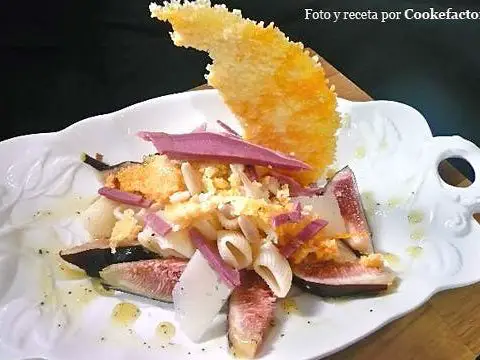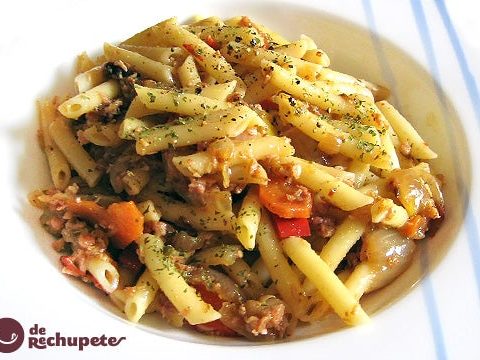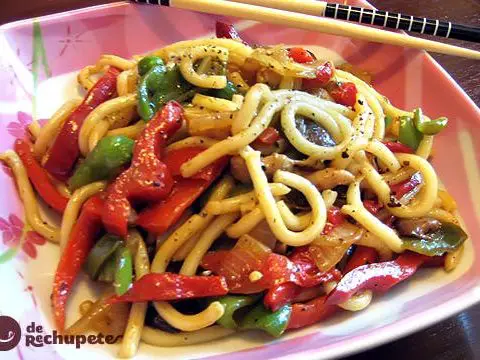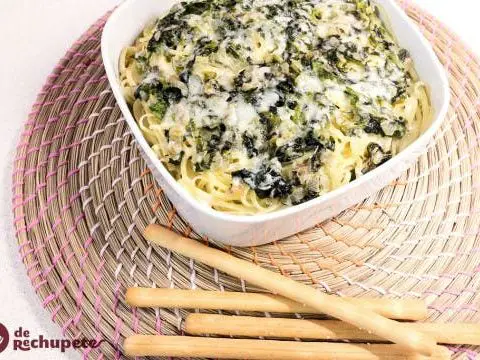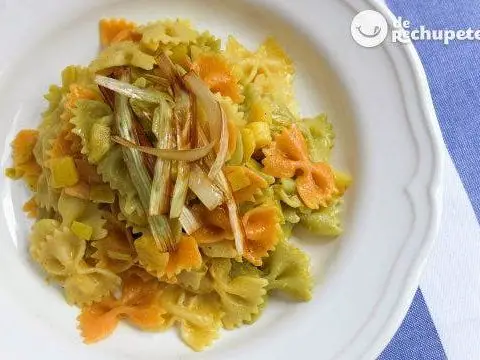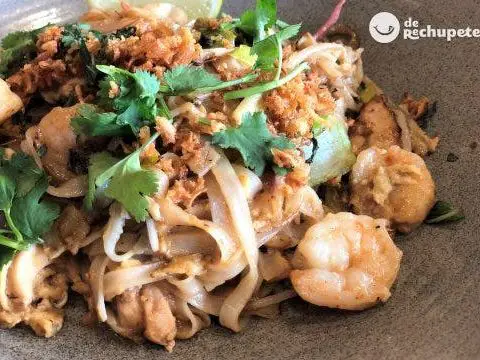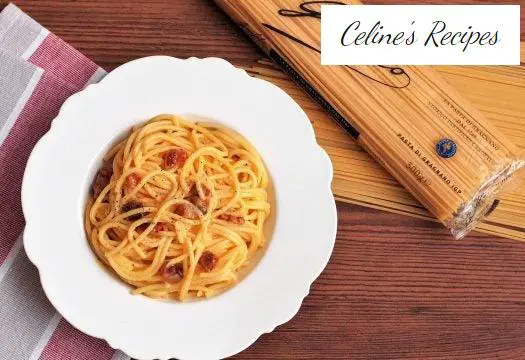
Info.
- Easy
- 25 minutes
- For 4 people
- 1.4 € / person
- 325kcal per 100g.
How to prepare spaghetti a la carbonara. Spaghetti alla carbonara.
Perhaps one of the best-known pasta recipes after the classic spaghetti bolognese , but that almost everyone prepares as they please, usually with cream.
Today I will teach you how to prepare the authentic pasta a la carbonara as in Italy itself, with a sauce based on egg and cheese that will make you leave the plate clean and repeat again.
This traditional dish, as Italian as pizza and Bolognese sauce , has a beautiful history, you know that I like to investigate the origin of recipes and this dish has many theories about it (maybe none is true but they are very interesting) .
The authentic carbonara sauce does not have cream or cream. In most Spanish households, “the false carbonara” is prepared , an adaptation of the original Italian recipe by adding cream.
I am not saying that they are wrong, on the contrary, but speaking properly of this subject is not the correct thing.
We are going to use the appropriate pasta for this recipe, a long Garofalo pasta, the Spaguetti à Figliata which are made with durum wheat semolina with a rough surface that helps to grip the carbonara sauce well. They are perfect for this type of Italian recipe.
Another day I will present you spaghetti with cream sauce and Spanish bacon (without them knowing about it in Italy) but today we are going to prepare the authentic spaghetti with carbonara sauce , claiming the original Italian recipe .
Preparation of the carbonara sauce
- Cut the pork belly or salty jowl (guanciale) into cubes or thick strips and put them in the pan.
- Fry in a frying pan for 5 minutes without adding oil, the bacon will release fat that we will use for the butter afterwards. We reserve in the same pan.
- We separate the yolk from the white of one of the eggs that we are going to use (do not throw the white, keep it in the fridge, you can use it in other recipes). In a bowl we mix the rest of the whole eggs with this yolk.
- Grate the parmigiano and add it to the same bowl with a pinch of salt.
- Next we will start with the butter or how to butter the sauce. While we prepare it, the normal thing is that we are cooking the pasta, as I explain later.
- We must reserve approximately half a glass of the water to cook the pasta before draining it and using it in the preparation of this carbonara sauce.
- By boiling the pasta, the water becomes cloudy with the starch released by the spaghetti and begins to have a denser texture.
- It is a magnificent broth to add when you want to mix the sauces a little more and get a delicious smoothness in a good plate of spaghetti.
- If we cook pasta for more than 4 people we will get more starch in the water and therefore the sauce will be thicker.
- For the spaghetti butter, half a glass of cooking water is enough.
- We butter in the pan, braising the bacon, with a little extra virgin olive oil and the cooking water.
- Add the ingredients of the pan to the bowl with the eggs and stir everything with a wooden spoon.
- We mix all the flavors well and sprinkle with freshly ground black pepper in quantity. Once we have the sauce we start with the pasta.

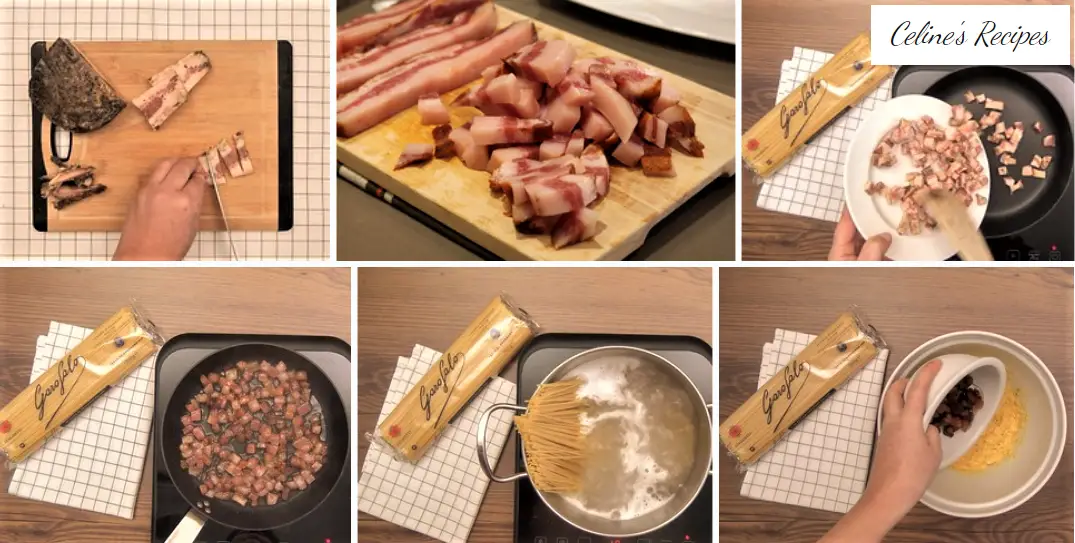

Preparation of spaghetti
- The first step is to have the sauce of ingredients already prepared before the pasta touches the water.
- The sauce should always wait for spaghetti and not the other way around.
- We heat in a saucepan a liter of water for every 100 g of pasta, it is the recommended measure per person, except if we are passionate about spaghetti at home.
- These proportions, which are normally indicated on the packaging, help the paste not stick together. And always try to use a large casserole, the largest in your kitchen.
- When it begins to boil in spurts we add 1 generous handful of salt, about 2 level tablespoons for every 500 grams of pasta. Then we add the pasta, always all together.
- Stir with a wooden spoon so that the spaghetti does not stick and are loose.
- On the back of the package of pasta comes the cooking time, we must be guided by these instructions because for each type it is different, in this case it is 11 minutes.
- In this way we will achieve what is called pasta “al dente” or at the right point. In other words, do not miss it, although a great tip is to try it almost at the end.
Presentation of spaghetti a la carbonara
- Once the time has elapsed we drain it immediately and combine it with the sauce.
- It is important that when draining we must wash the pasta in cold water, I warn you that it should not .
- When pasta cooking stops completely, the outer layer of spaghetti closes again.
- Therefore, pasta should never be washed with cold water, if we do so we will lose the possibility of this integration between pasta and sauce.
- But what we will have is simply an accompaniment, for example in a pasta salad it is advisable to do it but not in this recipe.
- Add the freshly made spaghetti to the sauce and mix everything with a spoon so that the flavors are well combined.
- Optionally we decorate each dish with more ground black pepper, always to taste.
Of course it is a simple and quick dish to make, simply delicious.
You can see all the step by step photos of the recipe for these spaghetti with carbonara sauce in this album. Do not miss any detail and they will be perfect, come on, repeat over and over again.
Curiosities and origin of this recipe
- The word carbonara comes from carbone, which in Italian is the name of carbon (Carbonari), and it is believed that the name originates from the typical dish of charcoal makers in the Apennine mountains.
- Others say it was created by Garibaldi’s troops during Italy’s unification war in the 1850s (the Risorgimento), when soldiers prepared their spaghetti over a coal fire.
- It is also mentioned that the name carbon comes from the use of black pepper in the making of the sauce.
- Regardless of the origin, the first to record the name was the Neapolitan culinary writer Ippolito Cavalcanti who in 1839 published the recipe for the first time in his book entitled: “Cucina teorico-pratica” .
- The use of the salty dewlap ( guanciale ) does not appear in the original recipe, in many restaurants in Rome it is currently replaced by smoked bacon.
- This ingredient is believed to have been introduced to Rome around 1944 by Allied troops after World War II , when American soldiers yearned for a meal with bacon and eggs.
